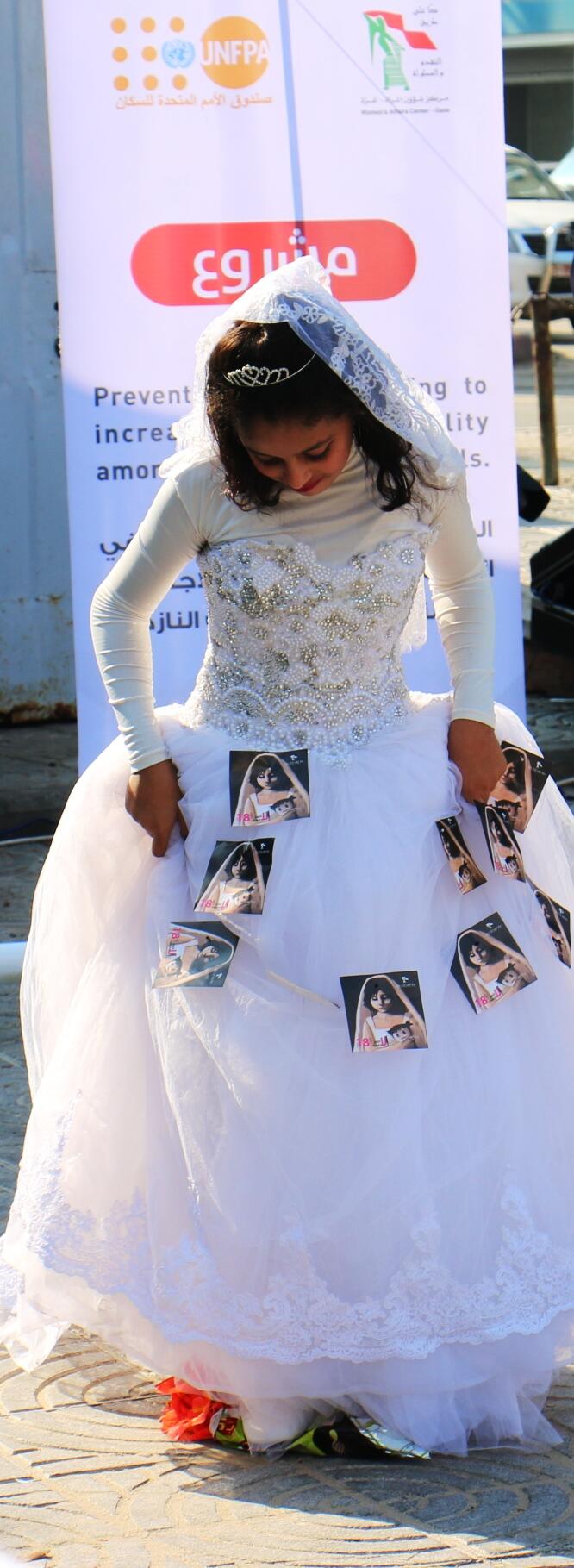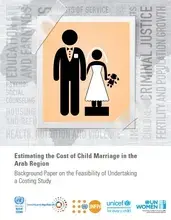“I was 15…when a man, who was 14 years older and already married, proposed to me... I was young and did not understand a thing…” A child bride said.
For decades, child marriage has been a concern worldwide; it is a human rights violation. Globally, 1 in 5 girls is married, or in union, before her 18th birthday. 21 per cent of young women, 20-24 years old, were child brides.
Many international agreements outlaw child marriage, in addition to the International Conference on Population and Development in 1994 which called on countries to eliminate child marriage. A year ago, the global Nairobi Summit on ICPD25 committed to eliminating harmful practices and gender-based violence, including child marriage. More than 650 million women and girls alive today were child brides, and by 2030, another 150 million girls under the age of 18 will be married.
Drivers of child marriage in the Arab region
The child bride had more to share about why she got married: “He convinced me that he will take me out, live happily ever after, buy me everything that I wanted. I believed him, and I was extremely happy Didn’t I tell you earlier that I was very young?
Many factors contribute to child marriage in the Arab region; conflict – resulting in higher rates of child marriages among internally displaced girls, poverty and economic conditions, low education levels. The volatile political and security situation in the Arab region, coupled with the coronavirus outbreak, disrupted the planned efforts to end child marriage, which will cause wide-reaching economic consequences. The expected result would be an additional total of 13 million child marriages that otherwise would not have occurred between 2020 and 2030 (UNFPA, 2020).
The results of a UNICEF knowledge, Attitude, and practices study in 2016 on Yemen showed that 72.5 per cent of females who responded were married before they reached 18, while 44,5 per cent got married at the age of 15 years.
Although progress has been made in recent years, child marriage in Palestine remains a key GBV issue and a child protection concern, exacerbated by the prolonged occupation and consequent standing humanitarian situation, and more recently, by COVID-19 pandemic. However, a recent study showed a l a significant decrease in child marriage among women aged 20-24 from 15 per cent in 2014 to approximately 11 per cent in 2017. In Gaza, the rate increased from 12 per cent to approximately 14 per cent for the same age group. Similarly, when looking at the West Bank, there are segments s that experienced an increase leaving communities behind the national trend. In addition, girls in affected places-- heightened clashes, political instability and violations by Israeli Forces--are more vulnerable to child marriage. Parents believe that it is a “measure of protection” by removing girls from affected areas and reducing the financial burden of families already facing challenges in their livelihood.
“My husband was hot tempered, continuously hit me and broke one of my ribs. I was helpless, humiliated, and cursed at. Four months later, I got pregnant.” The child bride spoke of her traumas.
Child marriage has long lasting traumatic impacts on girls limiting their options in life and their abilities to make autonomous decisions. Married girls have early pregnancies, which can be life threatening and in most cases. Such marriages bring an end to potentially finishing their education, which consequently leads to lack of knowledge on matters related to their sexual and reproductive health and rights, including pregnancies and child rearing. Furthermore, they are vulnerable and may be at greater risk of HIV infection.
“I gave birth to a baby girl. She was an angel. Unfortunately, they took her away from me because nobody was willing to accept this responsibility; my and my daughter’s. Two months later after giving birth, I was re-married by force.”
According to UNICEF’s global databases of 2019, 17 per cent of women aged 20 to 24 years in Egypt, 13 pre cent in Morocco, 28 per cent in Iraq, 8 per cent in Jordan, 6 per cent in Lebanon and 3 per cent in Algeria were first married or in union before age 18.
In the past 25 years, the prevalence of child marriage across the region has dropped from 1 in 3 to 1 in 5 young women, however, progress is slow. In order to achieve gender equality, empower all girls and women, eliminate harmful practices, including child marriage by 2030, tremendous joint efforts are needed to reach the Sustainable Development Goals.
While the impact of child marriage varies, it continues to be a major problem. Despite the work that has been done, the road to shrinking the number of child marriage rates is long. Globally, the price tag for putting an end to child marriage is $35 billion – about $600 to spare each child bride (UNFPA Nov 2019). Bringing the percentage of child brides to a halt requires joint efforts and different programmes and policies that are there but not being implemented.




